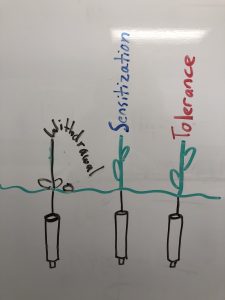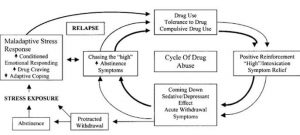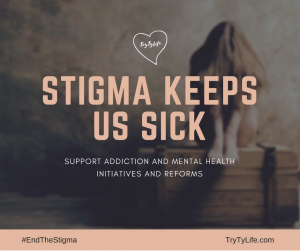
Stigma and addiction. These two words go hand in hand. Many will try to deny that claim and pry those hands apart. I would argue that that is impossible. Addiction, especially to hard drugs and alcohol but also to foods and nicotine, are so often blown off by our society for many reasons. Perhaps people think that those struggling with addiction are ‘junkies’, shameful, or lesser than others. However, these stigmas perpetuate the problem. An article on drugabuse.com put it perfectly:
“We live in a society where millions of Americans are dependent on drugs or alcohol and only a small percentage receive treatment at a facility.”
Why is this? What is going wrong? Or a more purposeful question, what are we doin wrong? Why do those struggling with addiction not seek out treatment? There are many, many questions that need answers surrounding the topic of addiction. Ironically, addiction is one the few mental diseases that is actually able to be broken down into simpler terms and understood by practically anyone. It is much more difficult to do that with disorders such as Schizophrenia, Bipolar, or Multiple Personality Disorder. So, if what addiction does to your brain and behavior can be described in terms that are easily understood, why do very few people know about it?

The answer can be found in a few areas. First, society in general needs to know what happens to your brain when you experiment with drugs of abuse. These drugs have the potential to do the following:
- They can block or activate needed neurotransmitters in your brain that work to send the correct signals through and to stop the unwanted ones
- The more a drug is used, the more it will change the normal pathways in your brain. This can lead to altered behavior and personality due to now different wirings in your brain
- They can also create dependency issues of tolerance, sensitization to the drug, as well as detrimental withdrawal symptoms. These can lead to lifestyle changes that are catered to attaining more and more of that drug
There are plenty of articles, TedTalks and more on how addiction simply works in the brain. But, no one is talking about it. Perhaps getting this information into health classes and school assemblies at the late middle school/early high school age would be beneficial. Health and Wellness teachers are already discussing topics such as sex education, drugs, and alcohol – they should be warning the students of what happens to the brain, addictive tendencies, signs of addiction, and environmental factors.
Another reason that people are not well-informed may be because of the stigma surrounding addiction, as mentioned above. Even friends and family members of those struggling with addiction may not want them to go to treatment centers because they think everything will change. However, that often needs to happen in order to have a holistic recovery for the one struggling. Treatment centers are meant to take the patient out of their daily routines and away from harmful environmental factors such as family members that supply a drug, unhealthy living situations, and more. From the outside, treatment centers may look intimidating or even harmful, but that is perpetuating the stigma of addiction as well. 
If we want to change the stigmas surrounding addiction, we need to start with education. Educating students and teenagers of the dangers of addictive substances and environmental factors as well as educating adults and family members of those struggling with addiction. Taking small steps towards these goals can eventually lead to larger changes with addiction altogether.
https://www.drugabuse.gov/publications/drugs-brains-behavior-science-addiction/drugs-brain
https://www.ncbi.nlm.nih.gov/pmc/articles/PMC3898681/